The Best Introduction to Pinnacles National Park
No Comments
Wondering where to start in our 59th national park? The most spectacular views in Pinnacles National Park are on the High Peaks Trail which is fairly strenuous. However, the best introduction to the park is along a loop which is quite easy (1.5-mile loop; 250-foot elevation gain) despite the great diversity of terrain encountered. A hiker in decent shape can easily combine both trails for an excellent overview of what makes the park so unique.
The main entrance road on the east side is always open. It winds for 5 miles to the Bear Gulch Trailhead, which has room for only a dozen cars, although it is the most popular trailhead in the park. On the first 0.3 miles, the Bear Gulch Trail passes large moss-covered boulders (best photographed in soft light). The trail then splits into the Bear Gulch Cave Trail to the east and the Moses Spring Trail to the west.
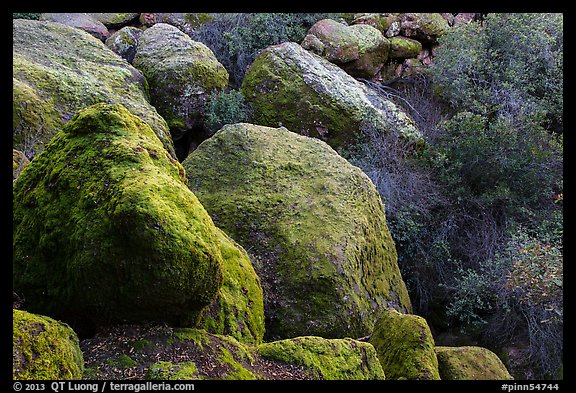
Pinnacles National Park is one of the best places to see talus caves. The caves were formed by volcanism, plate tectonics, and erosion, which create deep, narrow gorges filled with boulders that have fallen from the cliffs above and create cave structures complete with ceilings, passages, rooms, and even a seasonal waterfall.
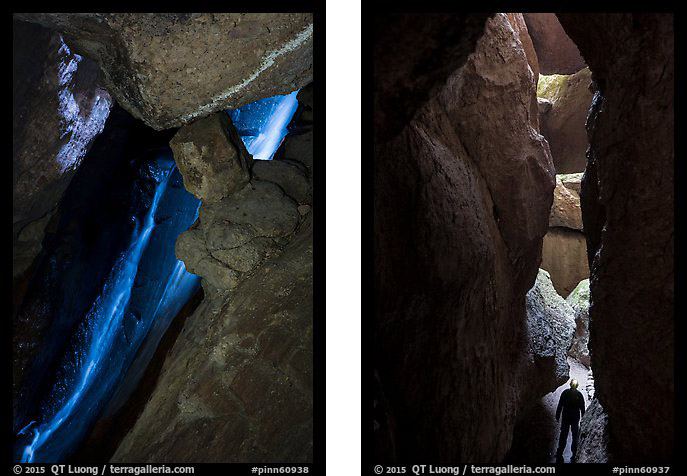
The Bear Gulch Cave, seasonally closed for bat nesting, is the most spectacular of the two talus caves in the park. The deep and narrow space reminds me of a slot canyon. Since talus caves are not really subterranean, I often find dramatic play between light and dark there. Although the trail is paved, reducing the risk of tripping, the light there can be dim, making a tripod (and a flashlight) necessary. My preferred section for photography is the flat stretch just before the stairway. In winter, the sun never reaches into the cave, making it possible to photograph all day.
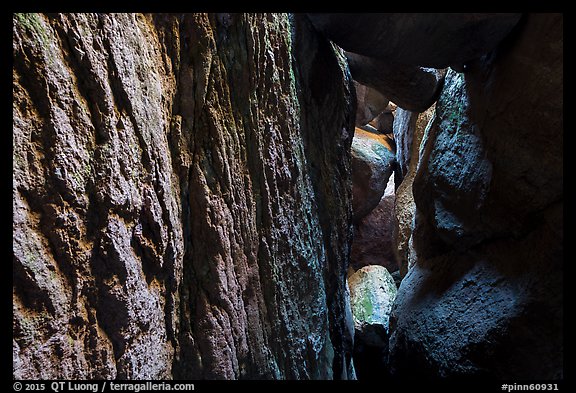
The Moses Spring Trail offers a good view of rock formations, including cliffs and giant collapsed walls in the gulch. Interesting subjects include waterfalls that form after the rain and poison oak leaves that turn into a surprising array of colors in October and November.
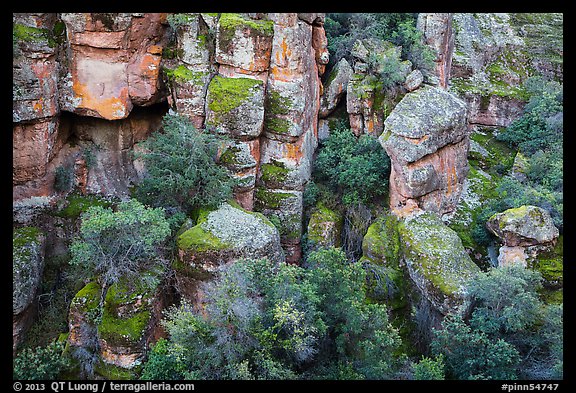
The two branches of the trail meet near Bear Gulch Reservoir, the only year-round body of water in the park. Early morning is good for photographing well-lighted pinnacles reflected in the calm waters of the reservoir from the dam and from the trail that skirts the reservoir on its way to Chalone Peak.
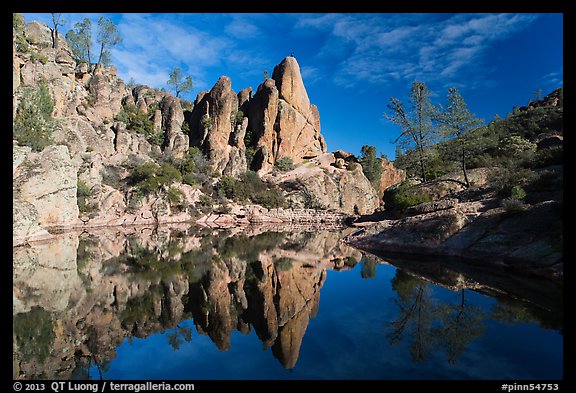
The sun disappears behind a high ridge before sunset, so sunset works only if the sky has nice clouds. If not looking north toward the brightly lit San Francisco Bay Area, the night sky of the park is quite dark. I sat for most of a warm summer night on the dam to try and capture Perseid meteors. Since meteors travel too quickly to react in time, I took repeated exposures through the hours hoping to catch one during a long exposure. A camping lantern placed at the end of the dam lit up the rocks, which would otherwise be rendered black on a moonless night.
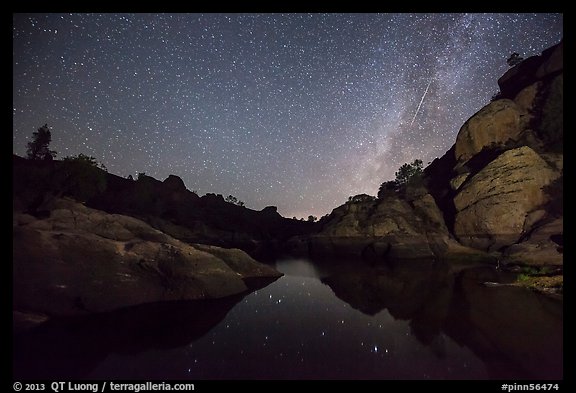
The Bear Gulch area is one of seven locations in Pinnacles National Park described in Treasured Lands, from which the text of this blog post is excerpted (High Peaks was another).
View more images of Pinnacles National Park

